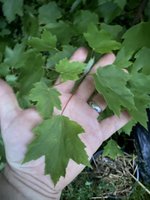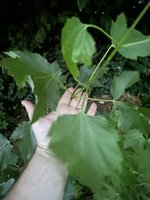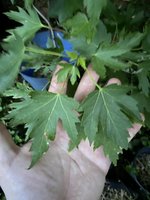I feel the key to using many North American maples in bonsai is going to be to select for individual specimens with smaller-than-usual leaves and internodes. As ABCarve has shown, red maple leaves in particular refuse to reduce, and they have to be partly defoliated almost continually to remove the over-sized leaves as they grow on the tree. The alternative, I think, is selective breeding.
@HorseloverFat has been selecting for various specimens with smaller-than-average leaves, and I'm following suit by planting large numbers of seeds from trees in my own area, with the intent to select the few with the best qualities.



